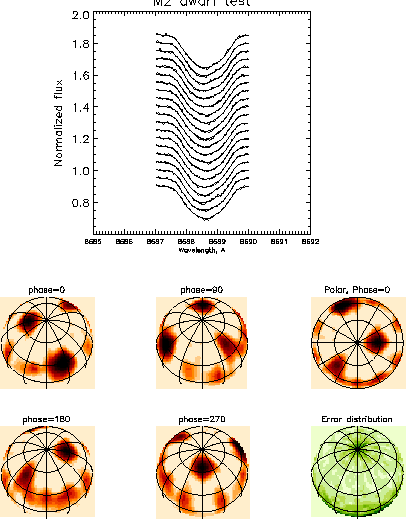High-resolution spectroscopy at near and mid-infrared wavelengths can provide unique information about the surface inhomogeneities of the rapidly rotating cool (and faint) dwarf late-type stars. In particular, Doppler imaging technique (which solves the integral equation that relates the stellar surface parameters to the observed line profile variations) is a powerful tool for the reconstruction of an 'image' of the stellar surface.
We breifly discuss available now temperature 'images' of the late-type stars and present the numerical experiments with our new line-profile inversion code based on the mathematical approach of quasi-optimal Kolmogorov-Wiener filtering applied to the objects' principal components of the Doppler imaging problem. Stars cooler than M2 could be only mapped by considering numerous molecular bands.
The M2-star test: Forward and inverse computations are
done with molecular lines. The thin lines in the top panels show the
artificial data with ![]() =3500 K,
=3500 K, ![]() =3000 K, log g=5.0, v
sini=24 km
=3000 K, log g=5.0, v
sini=24 km ![]() , i=60 degrees and S/N of 200:1 and the thick lines
are the fits with our inversion. The lower panels show the
reconstructed images and the error distribution for the restoration.
, i=60 degrees and S/N of 200:1 and the thick lines
are the fits with our inversion. The lower panels show the
reconstructed images and the error distribution for the restoration.
